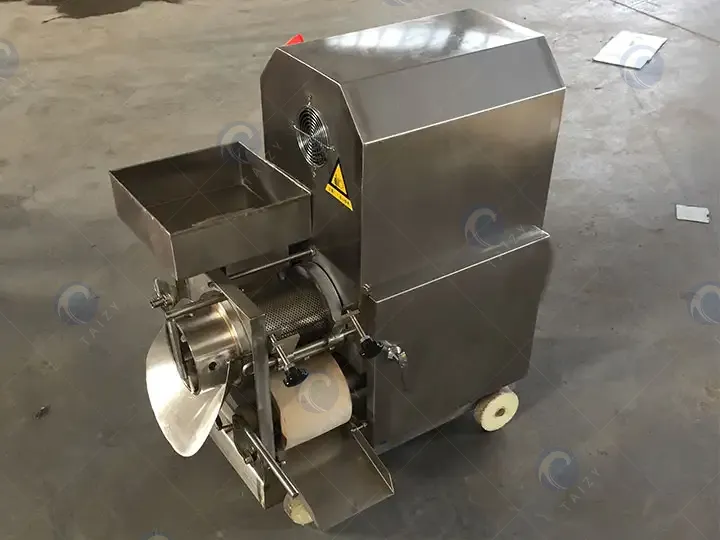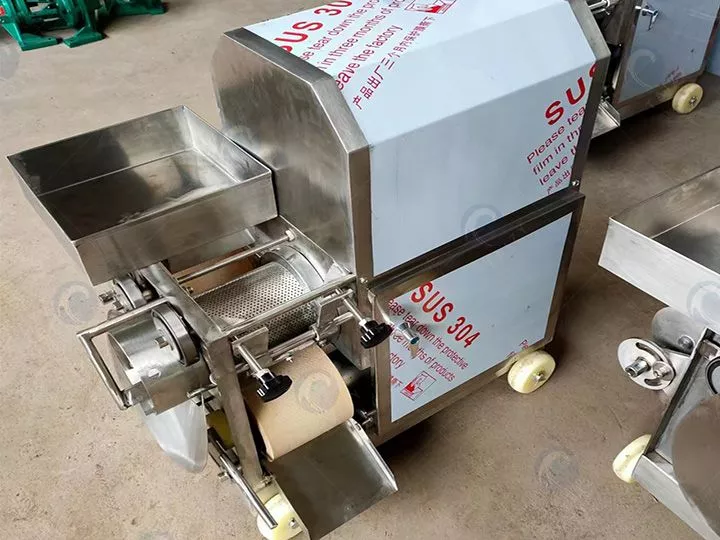10 years of experience as a food machinery equipment manufacturer
10 years of experience as a food machinery equipment manufacturer
The culinary world and small-scale fish processing industries are constantly seeking innovations that enhance efficiency, improve product quality, and maximize resource utilization. One such technological advancement that has gained traction is the small scale fish bone separator. This equipment, designed for operations that do not require industrial-scale throughput, offers a practical solution to the often laborious and time-consuming task of manually deboning fish.

A small scale fish bone separator, also known as a fish meat-bone separator or deboner, is a compact machine engineered to efficiently separate fish flesh from bones, skin, and sometimes fins. The fundamental principle of operation typically involves feeding headed and gutted fish (or fish pieces) into the machine. Inside, the fish are gently squeezed between a perforated drum and a food-grade rubber or polyurethane belt. The pressure forces the soft fish meat through the small holes of the drum, while the bones, skin, and other harder residues remain on the outside of the drum and are discharged separately.
The resulting product is a fine, minced fish meat, largely free of bones, which can then be used in a variety of culinary applications or further processed into value-added products. The “small scale” designation refers to machines with a processing capacity typically ranging from around 50 kg to 300 kg per hour, making them suitable for establishments like restaurants, small seafood processors, catering businesses, and research kitchens.
The adoption of a small scale fish bone separator can bring several significant benefits to smaller enterprises:
The utility of a small scale fish bone separator extends across several types of food businesses:
While the core principle is consistent, different models of small scale fish bone separators may have slight variations in design. Most are constructed from food-grade stainless steel for durability, hygiene, and ease of cleaning. The tension of the belt and the size of the perforations in the drum are critical parameters that can often be adjusted to suit different types of fish and desired meat texture.
Key operational aspects include:
Maintenance usually involves regular cleaning of the drum, belt, and collection areas to ensure food safety and optimal performance. Some models offer quick disassembly for thorough sanitation.
Investing in a small scale fish bone separator can have a notable economic impact. The reduction in manual labor costs and the increase in meat yield can lead to a relatively quick return on investment, especially for businesses processing a moderate volume of fish regularly. Furthermore, the ability to consistently produce high-quality, bone-free minced fish enhances the perceived value of the end products, potentially allowing for premium pricing.
From a qualitative standpoint, the texture of machine-separated fish mince is generally fine and uniform. While this is ideal for many reconstituted products, it’s a factor to consider depending on the desired end application. For some dishes requiring a coarser texture, manual mincing after deboning might still be preferred, though the separator significantly streamlines the deboning prerequisite.
When considering a small scale fish bone separator, potential buyers should evaluate several factors:

In conclusion, the small scale fish bone separator represents a significant step forward for smaller food businesses and culinary establishments working with fish. By automating a challenging and often costly part of fish preparation, these machines empower users to enhance productivity, improve product quality, reduce waste, and explore new culinary or product avenues. As the demand for efficiently processed and value-added seafood products grows, such equipment plays an increasingly important role in the success of small to medium-sized enterprises in the food sector.
